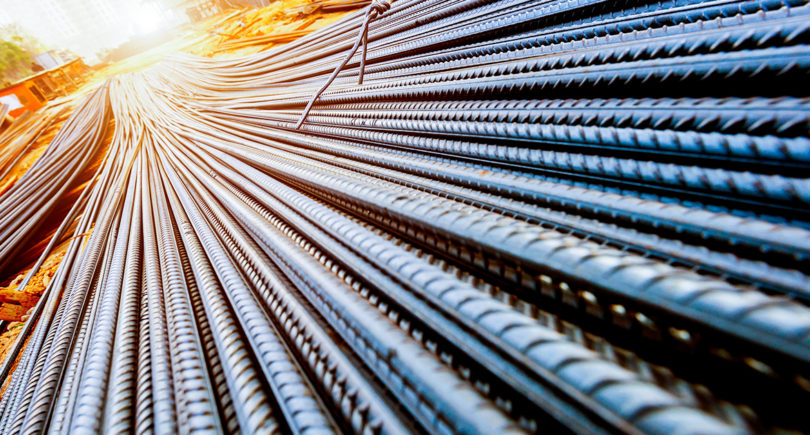
Posts Global Market CBAM 2113 01 May 2023
Ukrainian exporters to the EU should keep abreast of the future details of CBAM implementation as the mechanism is still being developed
From October 1, 2023, the European Union will launch what it has been working on in recent years – Carbon Border Adjustment Mechanism (CBAM). This is a new quasi-tax that will be paid by importers of products in the EU. The developed economies of the Western world will also introduce carbon import restrictions, for example, the USA, Australia, Canada, etc. Unfortunately, at this stage, the Ukrainian government has not been able to achieve a direct exclusion of our exports from the CBAM, despite the abolition of trade restrictions on Ukrainian products in the conditions of the war. However, this possibility still exists and the government should interact more intensively with the European Commission on this issue.
Normative base
On April 18, the European Parliament approved five pieces of legislation from the Fit for 55 package. Among the approved documents are the introduction of CBAM, designed to create a more level playing field for producers in the EU and beyond, and the reform of the Emissions Trading System (ETS) in the EU.
This system involves European companies with significant carbon emissions. For each ton of emissions, companies must obtain or buy the required number of permits (in CO2 ton equivalent). The price of quotas is formed on the open market.
The EU has set a target to reduce greenhouse gas emissions in the ETS sectors by 62% by 2030 (compared to 2005 levels). Free quotas for European businesses will be canceled gradually – from 2026 to 2034. A complete rejection of free quotas is planned for 2034.
CBAM will come into force on October 1, 2023, with a transitional period until December 31, 2025. During this period, importers will only be required to submit reports. The implementation of the mechanism will take place in parallel with the phasing out of free quotas in the ETS (2026-2034).
“EU authorities see CBAM as a way to counter carbon leakage. The same task was performed by free quotas. Therefore, one tool will be replaced by another. European producers perceive this situation ambiguously because CBAM provides protection only against imports, while European exporters are left without support,” notes GMK Center analyst Andriy Glushchenko.
From 01.01.2026, importers will have financial obligations: they will be able to import goods into the EU only through an authorized CBAM declarant, who will register the supplies in the relevant registers.
The EU declares CBAM as a special fiscal tool that will force importers to pay the same price for CO2 emissions that European producers seem to «pay».
When you see the price of CO2 emissions in the EU ETS above €85, do you think European producers are paying €85 or more for every ton of emissions? This is far from true. There are 29 converter steel producers in the EU with a total production capacity of 128 million tons of steel per year.
CBAM will have a greater impact on Ukrainian steel companies than on their competitors from other countries, as the dependence of the Ukrainian industry on the EU market in the context of war and logistics difficulties has only grown.
In total, a third of Ukrainian exports to the European Union may fall under the CBAM action. The most carbon-intensive export commodities include electricity, refined products, fertilizers, cement, aluminum, as well as iron and steel products: pig iron, steel semi-finished products, rolled products, pipes, etc. Also on the list (compared to earlier versions of the document) were hydrogen and organic chemicals. Over time, CBAM will cover all industries that fall under the European ETS scheme.
New reporting by exporters
Transition reporting should include information on the volume of exports, specific greenhouse gas emissions (direct and indirect) and carbon payments paid in the country of origin of the goods. The importer must submit the first quarterly report by January 31, 2024. In steel sector, aluminum and hydrogen production, only direct carbon emissions will be taken into account, while in the rest – both direct and indirect. The report must be submitted no later than one month after the end of the quarter, and there is a penalty for non-filing.
“From December 31, 2024, the producer will be able to apply for registration in the CBAM electronic register and register an authorized CBAM declarant (importer), who will be provided with information on verified CO2 emissions from the production of goods. Such an authorized declarant must be approved (authorized) by the competent authority in the country into which the import is carried out” notes Olga Boyko, coordinator of the industrial ecology and sustainable development committee of the European Business Association.
Every year, by May 31, an authorized CBAM declarant must submit a CBAM declaration for the previous calendar year through the CBAM registry. The first declaration should be submitted in 2027 for 2026.
According to Olga Boyko, the CBAM declaration should contain the following:
- The total quantity of each type of goods imported during the previous calendar year, expressed in MWh for electricity and in tonnes for other goods.
- The total verified emissions from the production of these commodities, expressed in tonnes of CO2 emissions per MWh of electricity or, for other commodities, in tonnes of CO2 emissions per tonne of each commodity type.
- The total number of CBAM certificates corresponding to the total emissions in paragraph 2, after payment the CO2 charge in the country of origin.
- A copy of the CO2 emissions verification report issued by an accredited verifier.
Every year, by May 31, that is, at the time of CBAM submission declaration, the required number of CBAM certificates must already be on the account of the authorized CBAM declarant in the relevant register.
Ukraine already has legislation on monitoring, reporting and verification of GHG emissions, which is fully consistent with that applied in the EU. However, the practice of its application in Ukraine is still not uniform and the question remains whether the EU will accept Ukrainian MRV data for CBAM purposes without additional verification. The Ukrainian authorities should definitely pay attention to this moment.
Losses of Ukraine’s economy from CBAM
Estimates of the CBAM influence on Ukrainian producers vary. Already after the definition of the CBAM work scheme, the European Business Association in May 2022 estimated that Ukrainian producers exporting their products to the EU annually will pay more than €1 billion in carbon tax. The updated draft has more stringent requirements compared to the version that the European Commission presented in July 2021. However, according to the latest assessments by EY analysts in Ukraine, CBAM can potentially cost $300 million for Ukrainian producers.
The discrepancy in estimates is quite justified, as it is based on export figures from different years. The final figure will depend on the volume and structure of Ukrainian exports to the EU in the reporting year.
According to pre-war estimates of the Kyiv School of Economics (KSE), Ukrainian companies in 2026-2030 can annually lose up to €396 million. According to a pre-war GMK Center’s study, the introduction of CBAM can cost for Ukrainian exporters €566 million per year, including iron and steel companies – €398 million per year. Later estimates point to the loss of exports of Ukrainian steel industry from the introduction of CBAM in the amount of €155-200 million per year, depending on the scenario.
Due to the war, the implementation of the monitoring, reporting and verification system for emissions in Ukraine was suspended.
No privilege
Even despite the war, Ukraine was not excluded from the action of the CBAM. According to the State Statistics Service, industrial production in Ukraine in 2022 fell by 36.9%. The deterioration of the situation was observed in October-December last year, after the start of rocket attacks on the energy infrastructure and interruptions in the supply of electricity. Under those conditions, industrial enterprises temporarily stopped working or reduced production. The European Union did not take into account the huge human and industrial losses of Ukraine from hostilities.
Previously, KSE believed that it was necessary for Ukraine to develop and apply individual conditions of CBAM implementation. Such conditions could include:
- providing access to advanced green technologies and participation in large decarbonization projects (for example, to develop the production and use of hydrogen);
- additional transitional period for the implementation of CBAM;
- financial support for the climate transformation of the Ukrainian economy;
- a separate CBAM mechanism that takes into account the context of Ukraine;
- reduction/abolition of existing restrictions on exports to the EU (as compensatory mechanisms).
The text of the CBAM approved by the European Parliament provides that in the event of destructive consequences for the economic and industrial infrastructure of the country to which the CBAM applies, for reasons beyond the control of the country, the European Commission must assess the situation and may propose appropriate changes to the procedure for applying the CBAM. Our government should definitely start working with the European Commission in this direction.
However, after CBAM is launched, Ukrainian producers will have no other choice but to adapt to new conditions despite the difficult wartime in our country. Also, Ukrainian exporters in the EU should keep abreast of the future details of the implementation of CBAM, as a detailed carbon adjustment mechanism for imports is still being developed.




